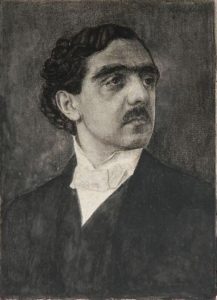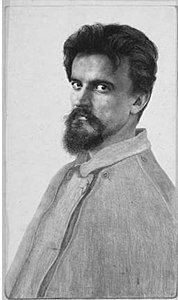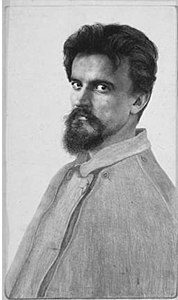
1868 - 1945
Karl Mediz

description
An Austrian landscape painter and graphic artist, an outstanding representative of Austrian Symbolism.
Karl Mediz was one of the leaders of the art association “Hagenbund”, which was the first society of independent artists of Austria, and afterwards a member of the Vienna Secession. For most of his life, he worked with his wife, artist Emilie Mediz-Pelikan, who was a talented graphic artist and landscape painter. During the bombing of Dresden in World War II, all the property of the artist, including paintings, was lost; his art was undeservedly forgotten. It was only in 1986 that a major exhibition of his works took place; the work of Karl Metiz was talked about as one of the most prominent in the history of Austrian art at the turn of the nineteenth and twentieth centuries.
Key ideas:
– Karl Mediz is known for his Symbolic landscapes, made in an individual technique, with clear graphic lines and balanced colors. Together with his wife, he loved to depict seascapes from a bird’s-eye view, bizarre heaps of rocks near the water and stormy waterfalls.
– The artist often looked for unusual angles for his paintings. Some works depict parks and gardens during twilight. They are filled with melancholic mood, mysterious shadow and loneliness. In the landscapes of Mediz, there are absolutely no people, nature is quiet and mysterious and causes a feeling of admiration for the pristine beauty.
– In his paintings, especially in graphic works, the artist pays much attention to details. Every tree twig and each stone are depicted accurately and with love.
– Apart from landscapes, Karl Mediz created many wonderful portraits. He depicted his contemporaries, artists and relatives, most often his wife, who was his permanent model. Mediz painted all portraits with amazing accuracy, conveying not only the appearance of a person, but also their character, mood, and emotional experiences.
– The most famous canvas of the artist is “Red Angel”, created in 1902. This painting, depicting the femme fatale androgynous woman, is made in the spirit of true Symbolism.
1868
1888
1891
1892
1894
1902
1903
1904
1908
1945
The birth of the artist
Settled in a colony of landscape artists in Dachau

He moved to Vienna

Visited Rome, Venice and Hungary

Spent a lot of time in Dresden

He became a member of the creative group "Hagenbund"

He participated in the collective exhibition of the association of artists “Hagenbund”

The works of the artist were accepted to the grand art exhibition

The artist's wife died unexpectedly

The death

